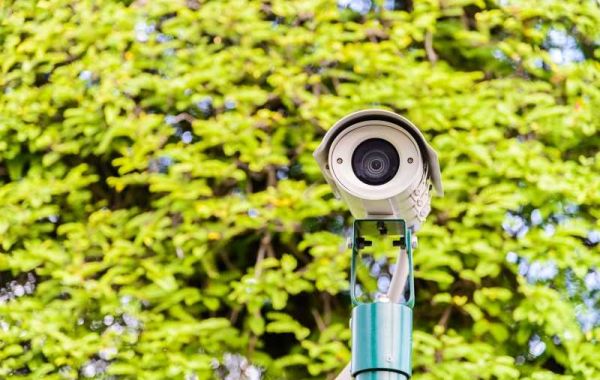Choosing the proper surveillance equipment for outdoor can be tricky if you are still determining what exactly you need to look for in a camera. You will likely want it to cover a large area, work perfectly in weather conditions, and provide crystal-clear images. In conclusion, you will have to pay attention to some features that will make a difference in your home's safety or your business's integrity.
Only some models can cover long distances; if they do, the footage quality might not be ideal, especially for facial features. However, there is a type that can deliver crisp images even at night, allowing you to recognize the person recorded. Since we are referring to them, long range cameras have outstanding recording abilities that can reach even 500 feet or higher. You can install them in several points of your property, whether wireless or wired and get a complete view of the area. To ensure you will get the best outcomes, here's what you should look for when picking a long-distance camera.
What is the Range of Video Cameras?
While all cameras work alike, some manage to capture better quality images than others and from a longer distance. It's what it's called "range," and it determines the length the lens can reach so that the images delivered can still be visible. The focalization and the zoom of the lens determine the range. Regular cameras can get between 50 and 75 feet until the images become blurry, and you can no longer decipher what is recorded. Those designed for long distances can reach 300 feet on average, but some incredible models can go as far as 800 or even 1,500 feet. The best part about these cameras is that their accuracy lets you observe facial features, which is essential in case of a break-in.
Pay Attention to the Lens of Long Range Cameras
Although multiple components determine the accuracy and range of a camera, the most important one, the one that influences the spectrum, is the lens. In long range cameras, the lens has to be high-quality and great-precision so that it will capture images that are clear and can be easily observed. For example, you should be able to detect someone's face or read a license plate from at least 100 feet to say that your camera is long-range. Therefore, you must choose a model that has an excellent lens.
Types of Lenses
Fixed lens: This is the weakest type that you should go for. It can't move, meaning it can't go from left to right, rotate, or zoom in, so you cannot capture a wide area. Hence, the image quality will not be satisfying.
Varifocal: This lens type can be adjusted to various focal lengths, but it has to be refocused after being adjusted. The adjustments can be made either manually or automatically.
PTZ: The name stands for pan, tilt, and zoom, and it refers to how it can move: up and down, left to right, and zoom. Similar to the varifocal one, this lens can move and zoom, but it will not require any adjustments after moving.
Features to Look For
Now that we've set straight the importance of the lens, it's time to go over all the other features that contribute to the efficiency of long range cameras. Simply reaching long distances doesn't guarantee the best performance if it doesn't include some extra functions like the following:
Night Vision
Most cameras do well in daylight, but what about when night comes and the need for surveillance coverage increases? Your camera should have a night vision sensor that uses infrared light to observe and capture images when lighting is scarce for recording in dim or even in darkness.
Wireless Connectivity
If you want to escape the hassle of installing wired cameras, go for the wireless ones that are so much easier to install without the tiresome wires that need to be laid around the area. A wireless model will allow you to place the cameras in various corners and focal points, like the most vulnerable entrances. However, to ensure the best outcomes, invest in a model with good battery life or, better yet, go for solar-charged cameras that use sunlight to collect and use power. This way, you will manage to save energy and make the best of the sunny days.
Motion Detection
Cameras that don't include a motion detection sensor are not an intelligent purchase, mainly due to the waste of memory. A model that continuously records is likely to consume memory with useless footage. Motion detectors on cameras allow them to turn on recording only when movement is sensed. Innovative models can also notify you through an alert on your phone, letting you know someone has entered the perimeter.
Extended Memory
To ensure you have access to important sections of the footage, search for long range cameras with SD card memory or, even better, can be connected to your cloud and store the video online. This way, you can access it at any time.
HD video quality
The efficiency of a long range cameras can be maximized only by obtaining high-definition video quality. This guarantees you will see vital parts of the recording, like faces or license plates. Over the past few years, image quality was upgraded to 4K resolution that provides detailed images.
Two-way Audio
Don't limit the functionality of your camera by only receiving audio signals, but go with models that incorporate two microphones and two speakers. This way, you can communicate with people in far areas or use the camera as an interface.
Mobile Compatibility
With all the technology surrounding us nowadays, it's no surprise that cameras can be accessed from a distance using apps installed on smart devices like phones or computers. With wireless mobile connectivity, you can access the camera, make adjustments, visualize certain parts of the footage, save or delete sections, and obtain alert messages.
Other useful features:
- Pivoting stands
- Backup batteries
- Compatibility with Amazon Alexa or Google Assistant
- Livestreaming
- Facial recognition
- Professional monitoring







